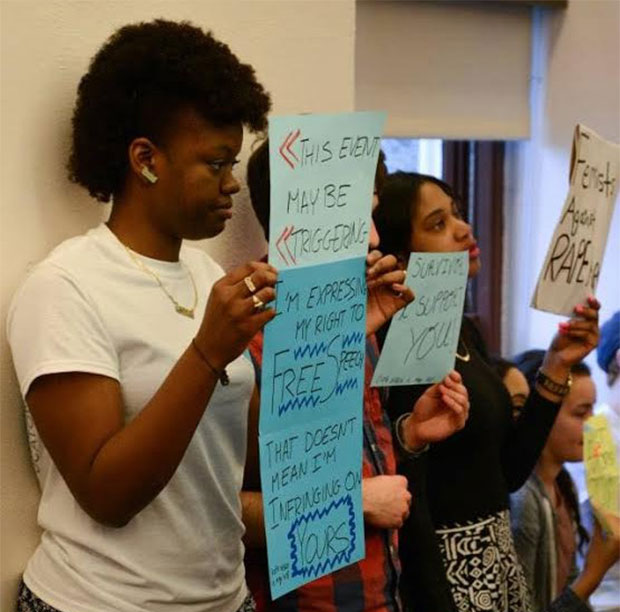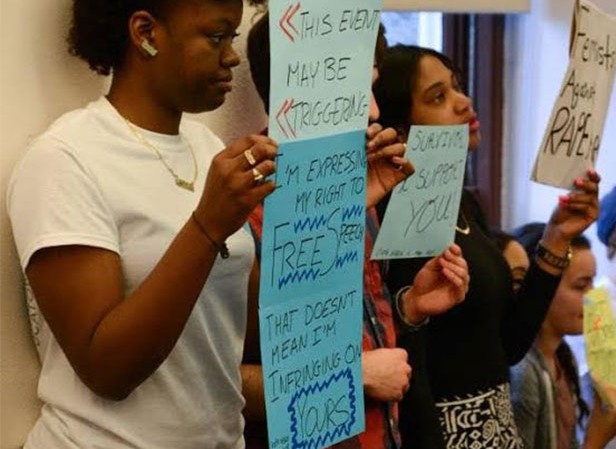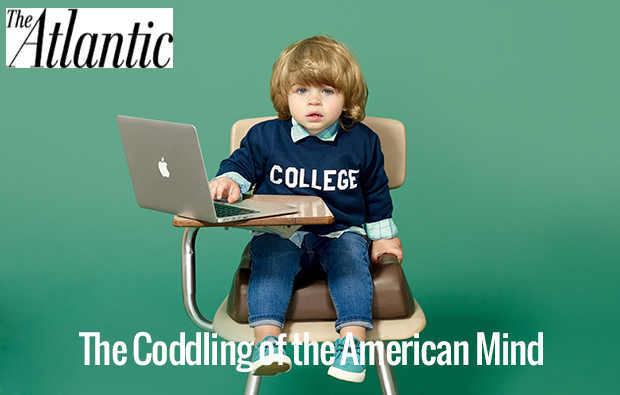
Earlier this year, a CBLPI-supported campus lecture on feminism by Dr. Christina Hoff Sommers erupted in a firestorm of controversy when a few students held up 'trigger warning' signs and organized a 'safe space' for potentially offended students to hide in. The event wasn't an aberration. Rather it was a demonstration of a new, largely student-led ethos on American campuses that threatens many students' mental health and all students' access to a quality education.
Unlike the Political Correctness movement which sought to restrict speech, this new movement, rooted in misguided notions of emotional well-being, seeks to punish anyone who fails to shield students from words, ideas and subjects that might cause discomfort to some. The list of possible offenders is long and growing, from established works of classical literature, to innocent questions such as where are you from?, to common words such as 'violate' (as in 'violate the law').
In a lengthy essay in Atlantic magazine this month, attorney Greg Lukianoff and psychologist Jonathan Haidt explore this movement, offer many examples of its manifestations in campus classroom and social life, unwraps the 'vindictive protectiveness' impulse that undergirds it, and discusses the serious psychological and educational risks it poses on campus and beyond.
Delving deeply into psychology, the authors discuss the ways in which this new campus movement damages students now and over time.
Cognitive behavior therapy, "widely used to treat depression, anxiety disorders, eating disorders and addictions" and other common cognitive distortions, systematically teaches an individual to rely on objective data to reevaluate subjective thinking and overcome negative emotional responses and fears.
Using 'exposure therapy', for example, an individual fearful of elevators can be guided in incremental steps over time to observe an elevator in operation, stand close to an elevator, touch the call button for an elevator, and eventually ride an elevator. "This reduction in fear during exposure," explain the authors, "is call habituation."
The parallel to formal education is clear: cognitive behavioral therapy teaches good critical-thinking skills, the sort that educators have striven for so long to impart. By almost any definition, critical thinking requires grounding one's beliefs in evidence rather than in emotion or desire, and learning how to search for and evaluate evidence that might contradict one's initial hypothesis.
But the campus ethos of "emotional reasoning" today takes students in the opposite, unhealthy direction by reinforcing their anxieties and fears and spreading them to their peers.
Students who call for trigger warnings may be correct that some of their peers are harboring memories of trauma that could be reactivated by course readings. But they are wrong to try to prevent such reactivations. Students with PTSD should of course get treatment, but they should not try to avoid normal life, with its many opportunities for habituation. Classroom discussions are safe places to be exposed to incidental reminders of trauma (such as the word violate). A discussion of violence is unlikely to be followed by actual violence, so it is a good way to help students change the associations that are causing them discomfort. And they'd better get their habituation done in college, because the world beyond college will be far less willing to accommodate requests for trigger warnings and opt-outs.
The expansive use of trigger warnings may also foster unhealthy mental habits in the vastly larger group of students who do not suffer from PTSD or other anxiety disorders. People acquire their fears not just from their own past experiences, but from social learning as well. If everyone around you acts as though something is dangerous—elevators, certain neighborhoods, novels depicting racism—then you are at risk of acquiring that fear too.
"What are we doing to our students if we encourage them to develop extra thin skin in the years just before they leave the cocoon of adult protection and enter the workforce," ask the authors.
A better question might be, "what are students doing to themselves and their peers when they enable the irrational emotional fears of a few to destroy the mental well-being and very costly educational opportunity of all?"
Lukianoff and Haidt offer steps faculty, administrators and the federal government can take to reverse this movement. Their article, worth the reading time for any college student, also provides a list of 12 common cognitive distortions that students who want to avoid being swept up in this unhealthy movement will want to avoid.


